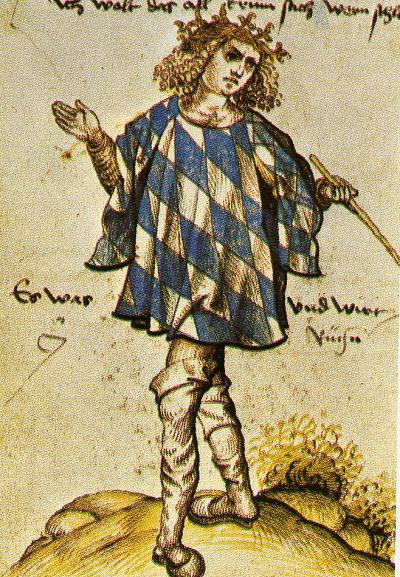Brightly dressed heralds are an essential attribute of medieval genre paintings and scenes. But the history of this profession began long before our era. It is precisely established that the first heralds were already in Ancient Greece. But the duties of such professionals in those days were somewhat different ...
Ancient greek heralds
Oddly enough, the first representatives of this profession are known to us in Ancient Greece. In this country, they participated in many activities. So, one of the most honorable professions was the heralds. These are representatives of other states. They performed various diplomatic functions. In addition, there were city heralds - guests of honor and distributors of various decrees and news. Finally, the lowest part of the class of heralds played the role of shouting and advertising agents at fairs and squares in front of the shops of merchants. The insignia possessed by the ancient Greek heralds is a special caduceus rod, which was also a symbol of the god Mercury.
In the Middle Ages
A slightly different occupation awaited the heralds in the Middle Ages. The first mention of them is associated with the era of the Crusades. Since the public in the campaigns was mixed, noble aristocrats sought to distinguish themselves from the crowd, to emphasize their generosity and wealth. For this, the nobles needed distinctive signs with which they decorated personal property, horses and weapons. The combination of all insignia laid the foundation for heraldry - the science of coats of arms and banners.

Significance was also given to medieval knight tournaments. And here again the heralds (or heralds) already known to us appear again. At first, the heralds simply remained in the retinue of their master in order to glorify and praise his exploits. But later the duties of the herald expanded. The heralds monitored the correctness of the tournaments, the observance of all the ceremonies. Only noble and wealthy persons were allowed to have their own herald in the retinue - for such a messenger should not only know tournament etiquette, but also represent his master in all important celebrations, advertise him, as we would say today. Now the heralds are well-known respected persons who are in the retinue of the first state representatives.

Behind them was the obligation to monitor the compilation of emblems and letters, declare peace or war, attend ceremonies. It was possible to get the title of herald by special order, only having distinguished himself in any battle, in a tournament or an official ceremony.
Heralds in Russia
Noble coats of arms appeared in Russia at the end of the 16th century. A little later, heralds appear in the country. Unlike his Western colleagues, the herald in Russia always remained a sovereign servant, although the responsibilities of both of them coincided in many respects. After the 18th century, this post becomes courtly and largely decorative. Now the heralds are the court officials responsible for the observance of the most important official ceremonies. In 1917, this post was abolished in Russia, although heralds still exist in modern monarchical states.